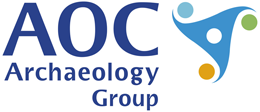Data from a Trial Trenching at Handsacre, Bromley, Lichfield, Staffordshire, 2017-2023 (HS2 Phase One)
High Speed Two Ltd., AOC Archaeology Group, Connect Archaeology, 2025. https://doi.org/10.5284/1129159. How to cite using this DOI
Data copyright © High Speed Two Ltd. unless otherwise stated
This work is licensed under a The Open Government Licence (OGL).
Primary contact
High Speed Two Ltd.
2 Snowhill
Queensway
Birmingham
B4 6GA
United Kingdom
Tel: 08081 434 434
Resource identifiers
- ADS Collection: 5618
- DOI:https://doi.org/10.5284/1129159
- How to cite using this DOI
Introduction

This collection comprises of text, images, spreadsheets, site records and GIS data from archaeological investigations carried out by Connect Archaeology between 15th May and 25th August 2017 at Handsacre, Staffordshire. An initial evaluation proposed the excavation of 8 evaluation trenches across the site.
Project Summary
The aims of the trial trenching were to:
- Locate, characterise and record any remains relating to the possible ring ditch and other features detected within the site by geophysical survey and assessments of aerial photographs and LiDAR data;
- Assess the extent and nature of archaeological remains within the survey boundaries;
- Characterise the nature of any archaeological remain within the survey boundaries;
- Assess the significance of any archaeological remains within the survey boundaries;
- Assess the change to the significance of the identified heritage assess as a result of the detailed design;
- Suggest measures, if appropriate and feasible, for further archaeological investigation to mitigate identified significant impacts;
- Contribute to the delivery of GWSI: HERDS Specific Objectives as specified.
The following specific objectives were outlines in the Generic Written Scheme of Investigation:
- Does a lack of visibility of Neolithic and Bronze Age monuments reflect genuine area distinctiveness, or is this due to variation in geology or investigative techniques?
- What is the evidence for pre-Iron Age phases of enclosure at the margins of the Trent Valley, and to what extent were Iron Age and Romano-British field systems and settlement influenced by earlier structuring of the landscape?
- Can we identify regional patterns in the form and location of Late Bronze Age and Iron Age settlements across the route, and are there associated differences in landscape organisation and enclosure?
- Investigate the degree of continuity that existed between Late Bronze Age and Iron Age communities in terms of population, mobility and subsistence strategies;
- What evidence is there for regionality in the mortuary rites of the Late Bronze Age and Iron Age, and how does that alter over time?
- Assess the evidence for regional and cultural distinctiveness along the length of the route in the Romano-British period, with particular regard to the different settlement types encountered along the route;
- Identify the location of Middle to Late Saxon settlement, explore processes of settlement nucleation and understand the development of associated field types and agricultural regimes;
- Identify patterns of change within medieval rural settlement from the 11th to mid-14th century.
Re-Use Value Statement
The recording of an Iron Age roundhouse and pit alignments have the potential to contribute towards the understanding of the prehistoric landscape at a regional level within Staffordshire. Further analysis of the results at Handscare along with other comparable sites along the Trent Valley may contribute to a further understanding of the utilisation of the Staffordshire landscape in Prehistory. Comparisons with other sites within the region may be limited however, as apart from the roundhouse there is little dating evidence from the site, particularly the pit alignments.
The lithics suggest a possible late Neolithic to early Bronze Age date and scientific methods of dating could provide a more confident date. However, there is potential for these lithics oto be residual within the pits, particularly when there is a presence of iron also recorded in the pit alignment. Sediments were collected from pits from Area 1 by the Research Laboratory for Archaeology & the History of Art, University of Oxford for potential OSL dating. It is highly recommended that scientific dating is carried out on the >4mm charcoal fragments from context (5020), pit [5025] from Area 2, because no dating of OSL samples were obtained from this pit alignment.
It is recommended that some of the charcoal fragments from the environmental samples should be further examined to work out the identification of the species, because this may assist in providing information about the wider area such as management and exploitation of woodlands. Further study of residues from the roundhouse is recommended.







